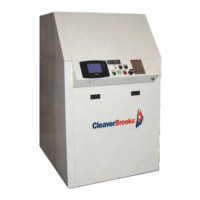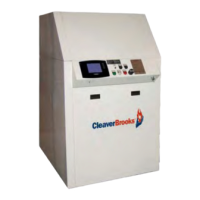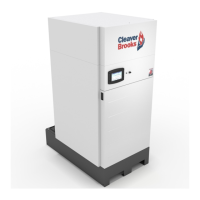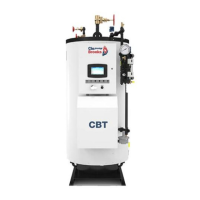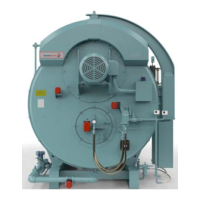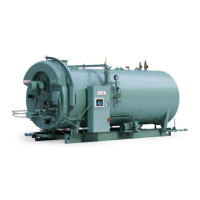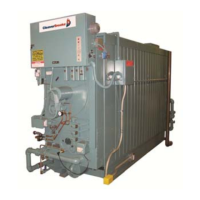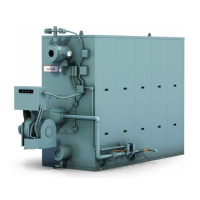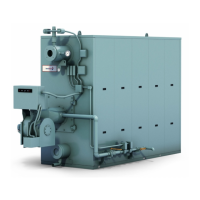CB FALCON
750-265 30
Setpoint and Hysteresis (Hydronic)
The CH, DHW and LL master each have similar setpoint and
hysteresis functions. The parameters for each are separate
and independent.
Whenever the burner turns on, the turn-off threshold is raised
by 18°F,and then it is decreased in steps. The time of each
step is provided by the hysteresis step time parameter. If the
time (T) is not-zero, then the following schedule is followed
until the off threshold reaches its original value:
Steam pressure setpoint PSI or None
This setpoint is used when the time-of-day input is off.
Steam time-of-day pressure
setpoint
PSI or None
This setpoint is used when the time-of-day input (J10 terminal 2) is on.
Steam Pressure off hysteresis
Steam Pressure on hysteresis
PSI or None
The off hysteresis is added to the setpoint pressure to determine the pressure at which the
demand turns off.
Similarly, the on hysteresis is subtracted from the setpoint to determine the pressure at which
demand turns on.
These may be set to None to indicate that no hysteresis has been defined.
The On and Off hysteresis are adjusted at the time the burner changes from off to on, and
from on to off, as shown in Fig. 12. This gives the PID algorithm some room to be more
aggressive in tracking the load, which can result in overshoot (or undershoot). (see the
Setpoint and Hysteresis section, page 31)
Steam hysteresis step time seconds
Time of each step. A step time of zero - disables this feature. (see the Setpoint and
Hysteresis section, page 31)
Steam P-gain
Steam I-gain
Steam D-gain
0-100
These parameters are the gains applied to the proportional, integral, and differential terms of
the PID equation for the Steam loop.
Steam 4-20mA remote control Disable, Setpoint, Modulation
Disable: When the value is “Disable,” the 4-20mA input via the Header is ignored and both of
the remote control functions are disabled.
Modulation: When the burner is free to modulate during the Run state, the 4-20mA input
from the Header input becomes the modulation source, where 4mA corresponds to the
Minimum modulation rate and 20mA corresponds to the Maximum modulation rate. All other
behavior remains as it was; the setpoint and the on/off hysteresis values are still used to
determine the burner-on and burner-off thresholds, and the TOD will still affect the burner-on
and burner-off thresholds, if this is enabled.
When the 4-20mA input is faulty (open, shorted, out of range, etc.) the control issues an alert
and reverts to using PID output for modulation, as if the 4-20mA function were disabled.
Setpoint: This parameter disables the CH outdoor reset function and the setpoint is provided
using a linear interpolation of the 4-20mA input value within a range:
• Either the CH pressure setpoint or the CH TOD pressure setpoint provides the setpoint for
the 20mA, depending on the state of the TOD input, and the CH minimum pressure
provides the setpoint for 4mA.
When the 4-20mA input is faulty (open, shorted, out of range, etc.) the control issues an alert
and reverts to using:
• For steam either the CH pressure setpoint or the CH TOD pressure setpoint, depending
on the state of the TOD input.
Steam 4-20mA remote control
hysteresis
n.n mA
Provides a hysteresis filter for the 4-20ma remote control input.
CH minimum pressure PSI
This parameter provides the minimum steam pressure used to calculate the 4-20mA control
setpoint for 4mA.
20 mA CH pressure PSI or None
Establishes the pressures for the end points of the 4-20 mA inputs
Table 10. Central Heating Steam Parameters. (Continued)
Parameter Comment
Step
Time since turn-
on Hydronic Turn-off threshold
1
0 <=
time <1T
Setpoint + Off hysteresis + 18°F
2
1T <=time <2T
Setpoint + Off hysteresis + 8°F
3
2T <= time <3T
Setpoint + Off hysteresis + 6°F
4
3T <=time <4T
Setpoint + Off hysteresis + 4°F
5
4T <=time <5T
Setpoint + Off hysteresis + 2°F
6
5 <= time
Setpoint
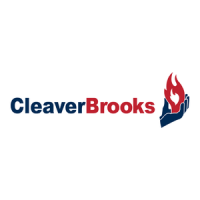
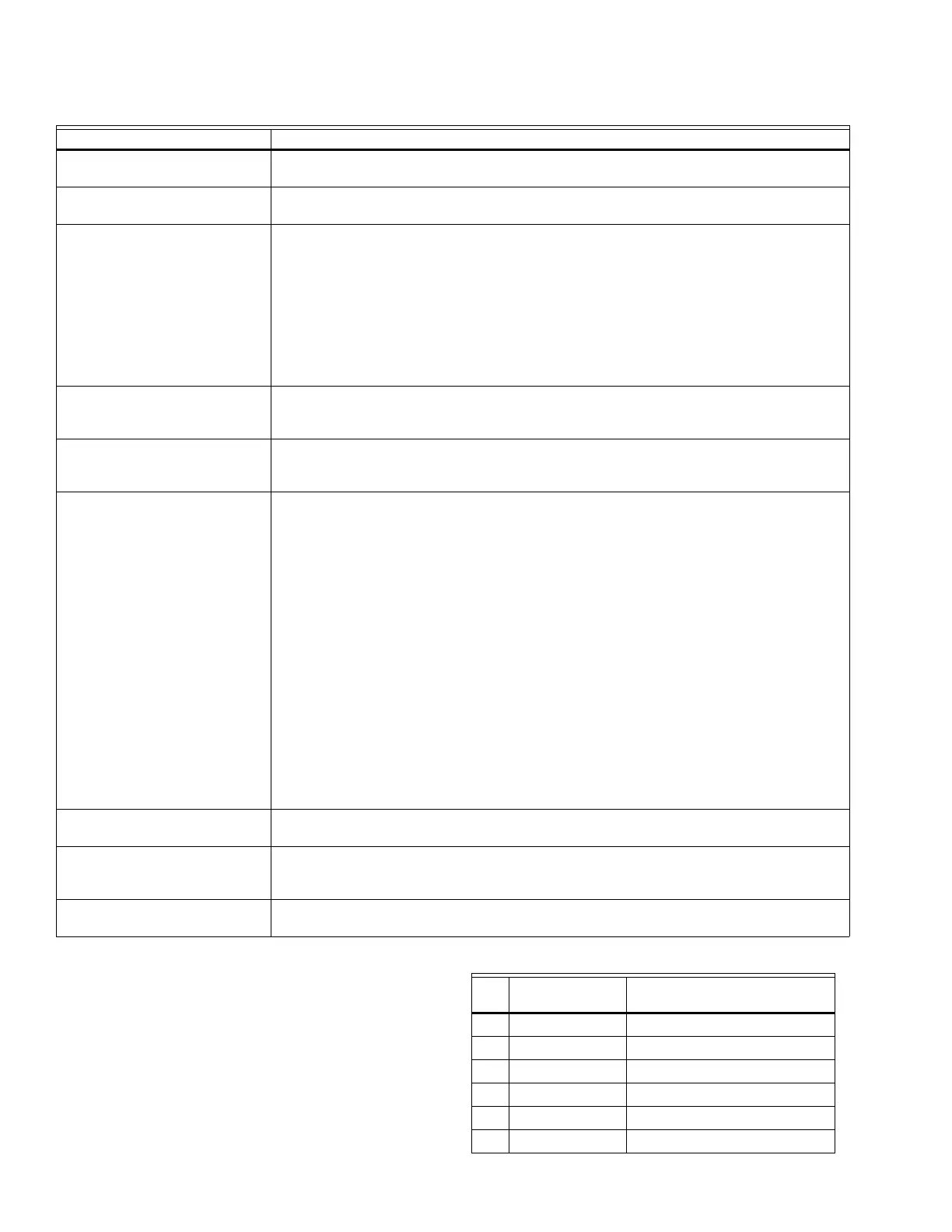